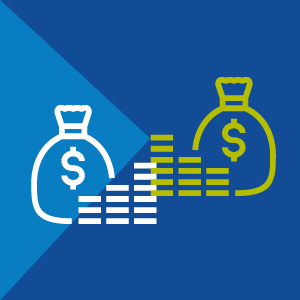 At Summit Financial Resources, we see cash as the lifeblood of any small business and the key indicator of financial health. Cash flow is necessary for everything from purchasing inventory and meeting payroll to paying taxes and keeping daily operations humming.
At Summit Financial Resources, we see cash as the lifeblood of any small business and the key indicator of financial health. Cash flow is necessary for everything from purchasing inventory and meeting payroll to paying taxes and keeping daily operations humming.
Many small business owners believe cash flow and profit are the same thing. While it’s true that a business must generate profits and operate with positive cash flow in order to thrive, these two financial parameters are very different. Understanding the role profit and cash flow play in your business, and keeping a close eye on both, is critical to achieving success.
The Difference Between Cash Flow and Profit
Cash flow is the money available within a business at any given time as a result of cash inflows and outflows. It’s money that comes in when customers pay you and goes out to finance your operations, including paying bills, stocking inventory, and compensating workers.
Profit (also called net income) is what remains from sales revenue after all expenses are deducted, and it is the basis on which tax is calculated. Simply put, profit is revenue minus your expenses.
Owners of startups and established small businesses often view profit as the true measure of their success. However, just because a business is profitable doesn’t mean it has sufficient cash flow to sustain itself. The reality is that cash flow, not profit, determines the viability of a small business. In fact, a study by U.S. Bank found 82% of businesses fail due to cash flow mismanagement.
A Profitable Business Can Have Insufficient Cash Flow
Although a business must ultimately be profitable to survive, profit and cash flow can exist in varying degrees of balance. For example, high profit and low cash flow can result in a profitable business that is unable to pay its bills. If you are selling your product for a higher price than what it costs to manufacture, you have a basis for a profitable business. However, it’s possible that your customers may take as long as 90 to 120 days to pay their invoices. Getting caught between suppliers who demand their money now and buyers who are slow to pay can create a cash flow crisis. This means that while you are making a per-unit profit, you may be unable to meet your financial obligations during periods when you are waiting for customers to pay you. In a worst-case scenario, your creditors could force your business into bankruptcy at a time when sales are growing rapidly.
Conversely, a business that is paying its bills may not necessarily be profitable. For instance, you could experience increases in production volume that might cause costs to rise above a profitable level. If you borrowed money to solve a cash flow problem, the increasing debt on that loan could squeeze your margins beyond the break-even point. Even though you have cash on hand, your business will no longer be profitable. If you consistently struggle with cash flow problems, it may restrict your growth when there is strong market demand for your products or services.
Commit to Good Cash Flow Management
Knowing the financial aspects of running your small business is as important as knowing about the product or service you are selling. Having enough cash to cover the bills is critical for the survival and success of any business, and it is especially important for small business owners. Small and midsize businesses are typically at the highest risk of being cash poor because owners continually re-invest profits into their operations. Larger, more established businesses are more likely to have a cash reserve.
Good cash flow management requires careful planning. Your goal is to ensure you have the right amount of cash coming in at the right times to meet the daily needs and obligations of your business and building in a buffer to sustain operations in case of an emergency.
For starters, this means tracking the movement of cash in and out of your business. Conducting a step-by-step analysis and planning ahead for gaps between accounts payable and accounts receivable can help ensure that you have the reliable cash flow you need to grow and invest in opportunities as they arise.
Include Working Capital Financing in Your Cash Flow Strategy
It’s not unusual for growing companies to run into unexpected situations where they suddenly have too little cash on hand. Working capital financing is a vital solution for small business owners who need to bridge short-term cash flow gaps.
Summit Financial Resources offers working capital loans that involve using your accounts receivable and other assets as collateral. We can mix and match from a variety of product options to suit your needs, including invoice factoring, asset-based lending, inventory lending, and equipment financing. We partner with our clients to reach their business goals, creating custom financing solutions with reasonable rates and structures that banks and other commercial finance sources cannot provide.
Boosting your profits is a worthwhile objective, but it is essential to have a solid plan for meeting the cash needs of your business. Understanding the differences between profit and cash flow will help ensure that you strike the balance necessary to support healthy business growth.
Working Capital Financing is a few clicks away.
Apply online and get started today >
Summit Financial Resources specializes in working capital financing for small to medium-sized businesses that need increased cash flow. We provide working capital financing through invoice factoring, asset-based lending, inventory lending, and equipment financing.
